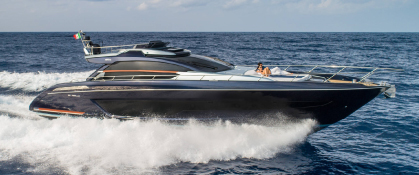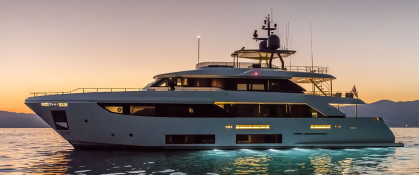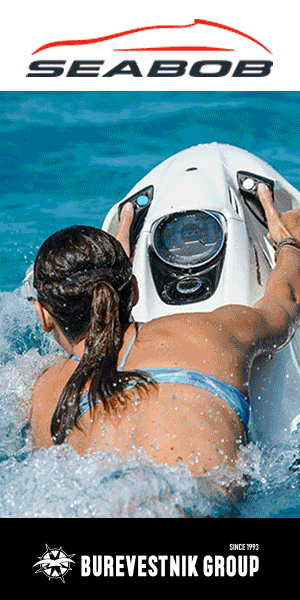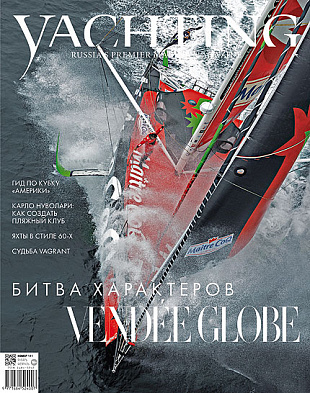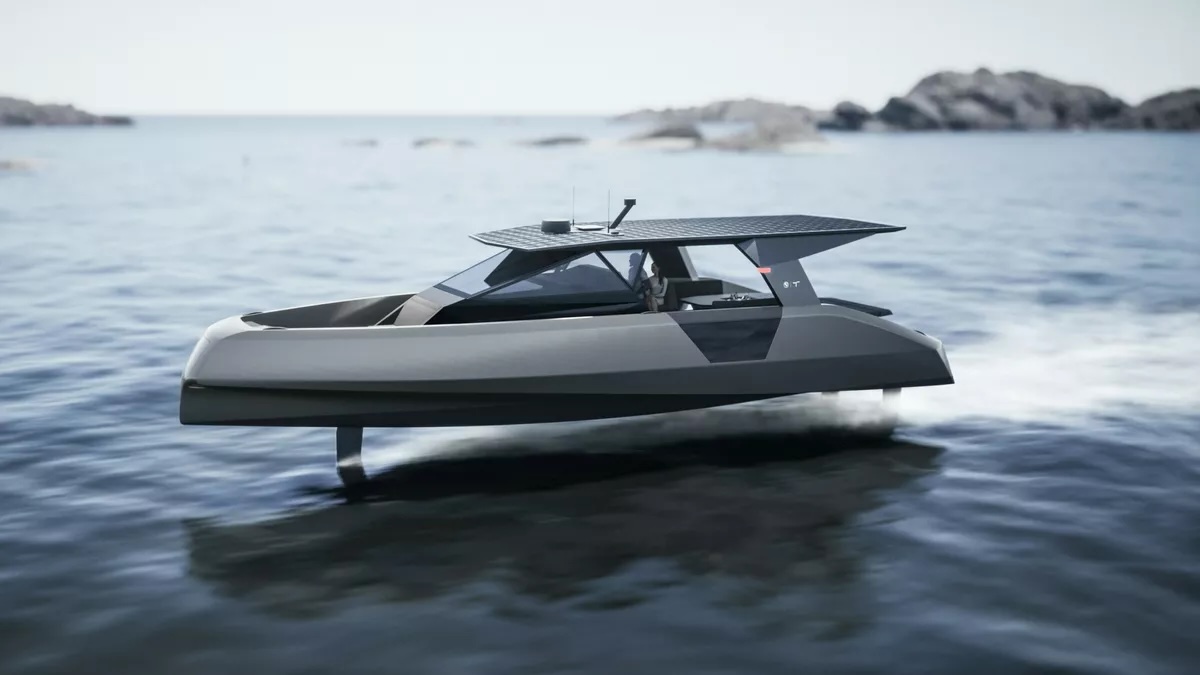
Top 7 foiling motor boats for 2024
Why yachts and boats are getting foils and what does the market offer right now.
What is a displacement hull
A displacement boat moves through the water by pushing it away from itself, unlike a hydroplaning boat, which glides through the water with only part of its hull touching it. The speed of a displacement boat depends on its length and is often expressed as hull speed. This rating indicates the maximum speed that a displacement hull can efficiently achieve without significantly increasing drag and fuel consumption. For example, for a 6 metre boat this speed is approximately 6 knots and for a 7 metre boat it is just under 7 knots. Acceleration above the hull speed limit requires considerably more power and becomes inefficient when the boat starts to climb the bow wave rather than cut through the water.
How a planing hull works
Planing boats push the water downwards as they accelerate. According to Newton's third law, this action creates an upward force that lifts the hull above the surface of the water.
This mechanism allows planing hulls to travel at higher speeds than displacement boats. However, it is also very energy consuming. For example, a 25-foot motorboat uses 15 times more energy per mile than a conventional combustion engined car.
How hydrofoils work
The concept of hydrofoiling is to lift the hull out of the water and maintain it in this position in a dynamic mode, using planes that are commonly referred to as hydrofoils. As a result, it is possible to reduce the influence of waves and to reduce energy consumption when travelling at high speed. However, vessels with fully submerged wings require an ‘autopilot’ that monitors the position of the vessel and corrects the lifting force of the wings by changing the angle of attack and deflecting the flaps. A low-submerged underwater wing (Alekseev wing) is devoid of this disadvantage. Such a wing, rising to the surface, gradually loses lift, so it is not able to fully surface.
Sailing vs flying: what are the advantages of hydrofoils?
- Hydrofoils provide a vessel with lift, allowing it to rise above the water and significantly reduce drag.
- Hydrofoils can achieve higher speeds than traditional boats with the same level of engine power.
- Hydrofoiling can reduce fuel consumption by up to 80 per cent compared to conventional boats.
- A hydrofoil vessel is much more comfortable at high speeds as its hull is practically not in contact with the water surface.
- The use of electric drive allows for almost absolute silence and minimises environmental impact.
- Despite the higher initial cost, hydrofoils are cheaper to operate (primarily due to low fuel consumption).
Top 7 hydrofoil motorboats
SEAir
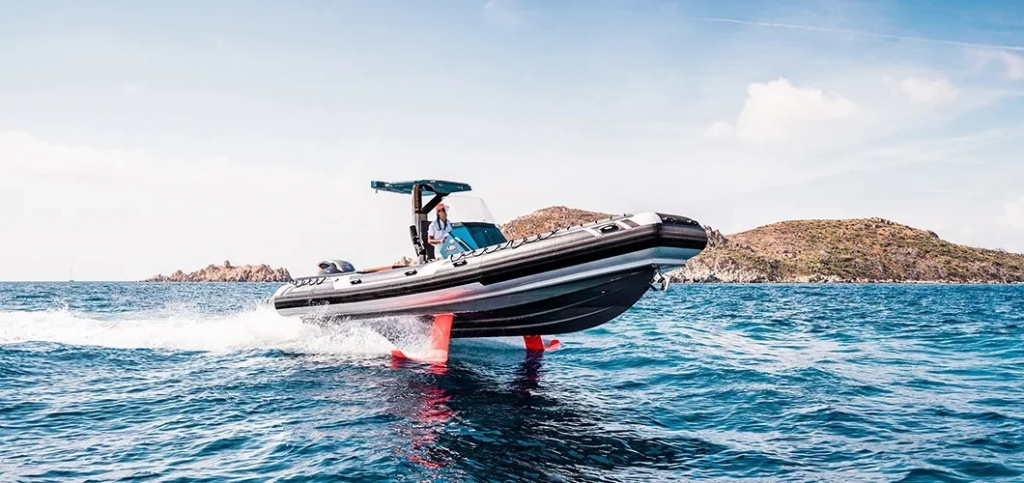
French company SEAir produces 5.5 metre RIB boats with folding hydrofoils based on one of the popular Zodiac ‘rib’ models, capable of speeds up to 42 knots. The proprietary SEAir Retractable 2 Foil System consists of two main curved fenders approximately at the midships of the boat and additional smaller fenders on the outboard engine leg. The folding function of the fenders allows the boat to be pulled ashore, trailered and moored without fear of damaging the expensive system.
Enata Foiler
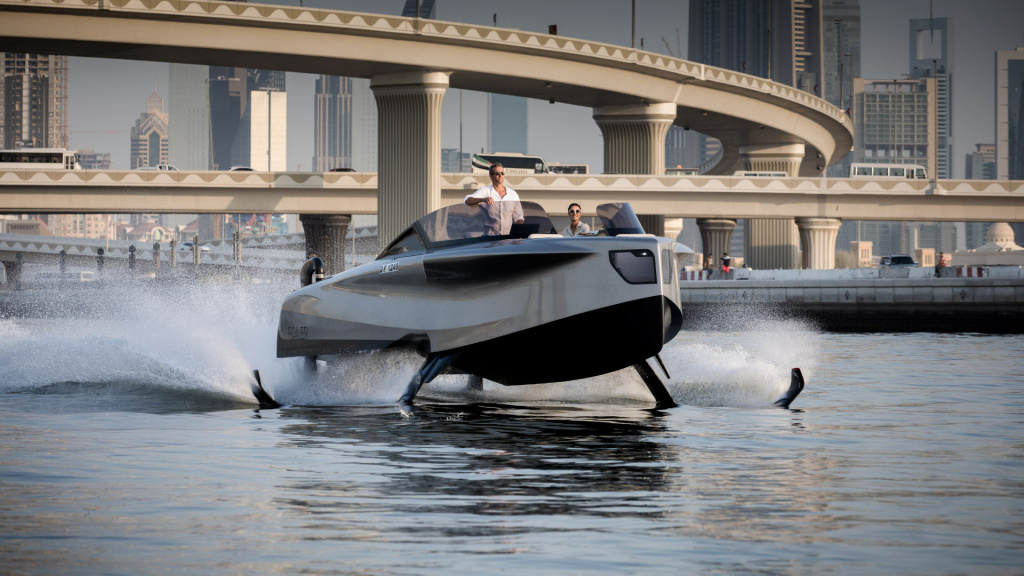
A 32-foot boat with a top speed of 40 knots and a range of 190 miles. Equipped with industrial grade hydraulic drives powered by two 740 hp turbocharged diesels, this gives the boat a top speed of 40 knots. The boat enters foiling mode at a speed of 18 knots. The fenders are fully retractable, allowing the boat to be used in normal displacement mode with a draft not exceeding 60 cm. In the bow cockpit of the bowrider there is a duplicate joystick control.
Candela C8
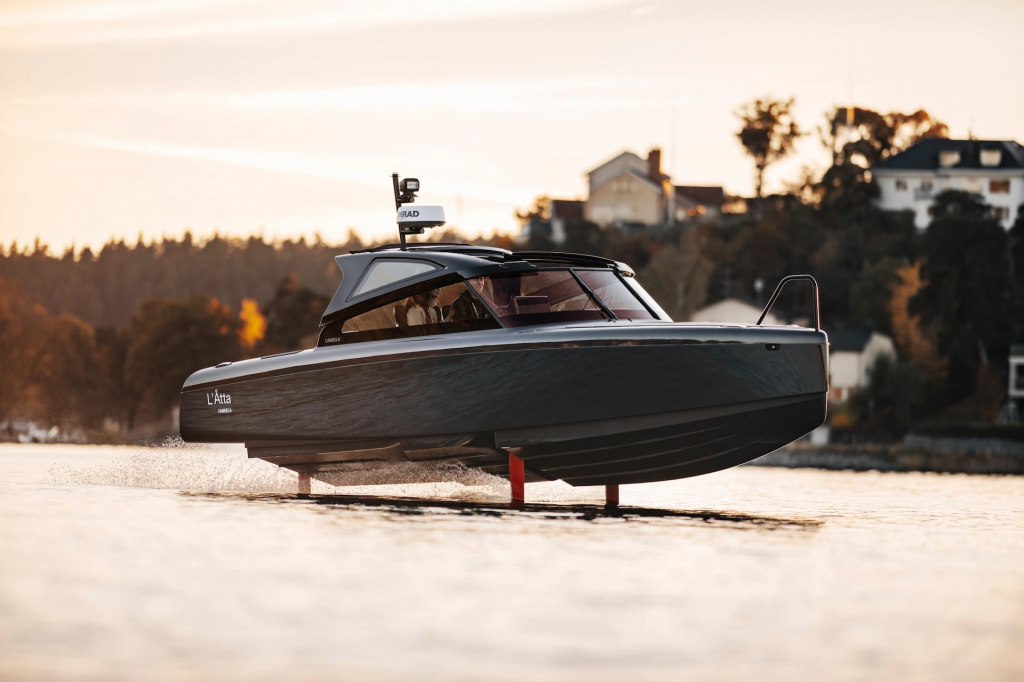
A flagship electric hydrofoil boat from a Swedish start-up. Capable of travelling 57 miles at 22 knots and accelerates to 30 knots. The C-Pod's in-house designed propulsion system consists of two electric motors in a torpedo-shaped underwater hull that spin two multi-directional co-axial propellers. The combined power of the motors is 67 hp and the efficiency is very high. A special controller automatically adjusts the angles of attack of the foils. In addition to a cockpit for eight people, the boat has a cabin with a bathroom.
Iguana Foiler
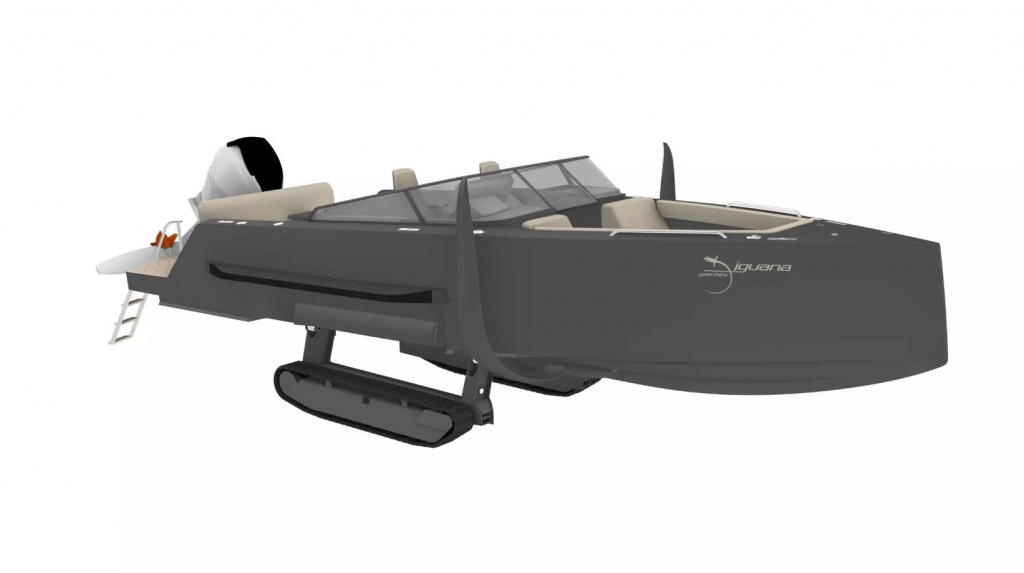
A bowrider that not only walks on water and takes to the wing, but also drives on land. A one-of-a-kind amphibious boat from the company that came up with the idea of combining speedboats with a tracked chassis. Powered by a 300hp EVOY electric outboard motor, the boat will be capable of speeds of up to 30 knots. Thanks to the foils in flight mode, energy consumption promises to be half as low.
Mantaray M25
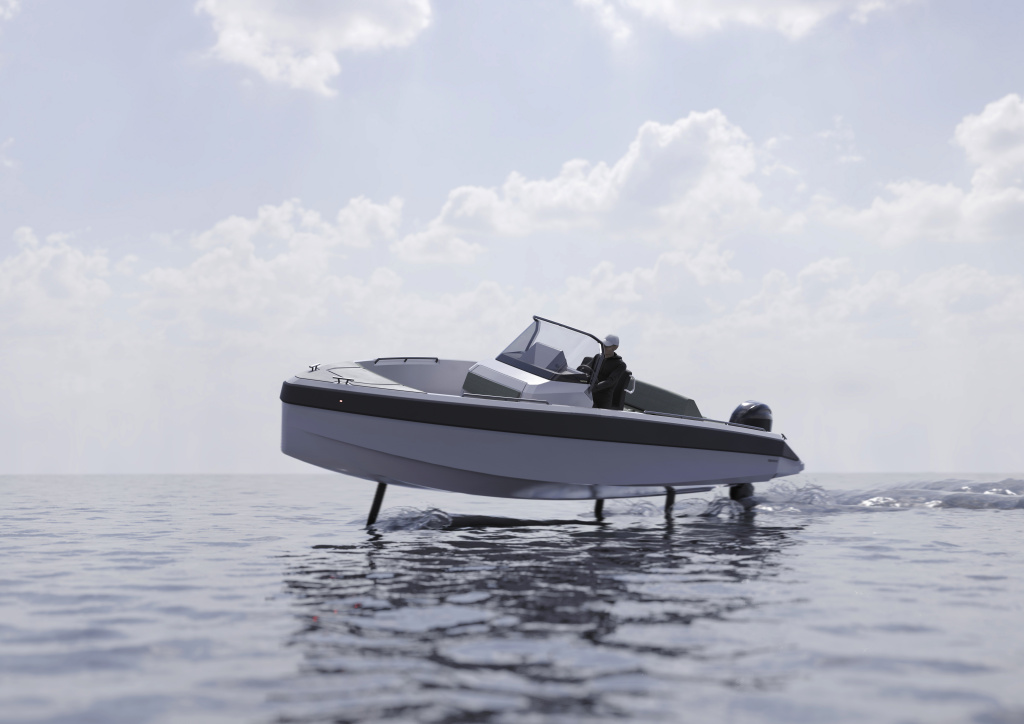
The Mantaray M25 is a 25-foot, seven-person boat with a top speed of 35 knots and a cruising speed of 25-30 knots. Unlike many of its counterparts, its self-tuning hydrofoil system is fully mechanical, which has significantly reduced the cost of the boat. In addition, Mantaray claims that the Mantaray Dynamic Wing Technology® hydrofoil system reduces fuel consumption and CO2 emissions by up to 70%.
Navier N30
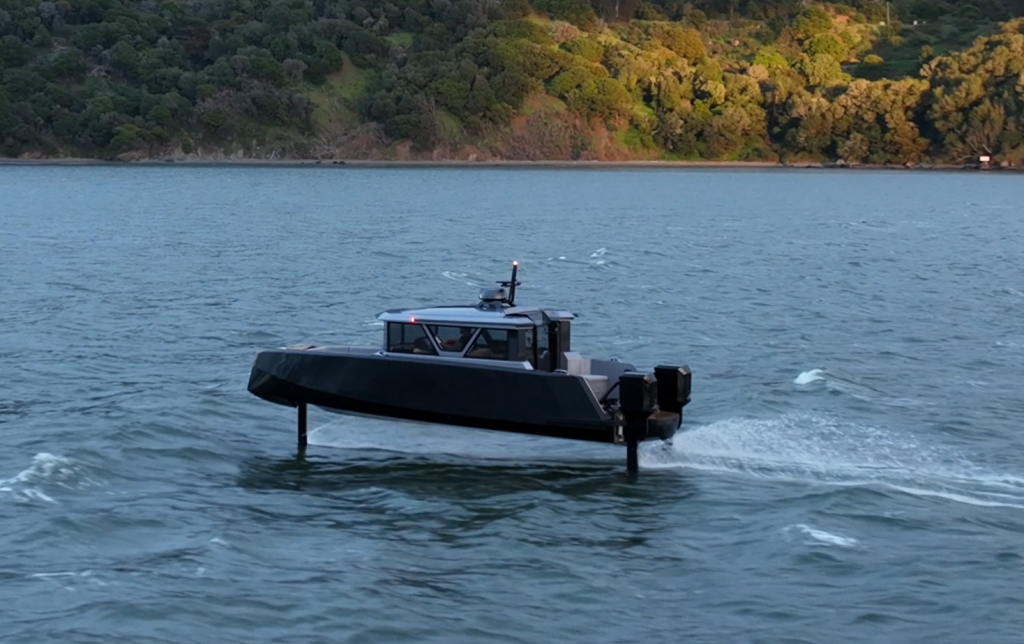
The Navier N30 closed-cockpit foiler was created by a Californian start-up founded by graduates of Berkeley, MIT and Carnegie University and traces its lineage back to America's Cup judging boats. Like the participating sailboats in the regatta, it is made of carbon fibre and is capable of reaching speeds of up to 35 knots on foils. The N30 is equipped with a 90kW engine and has an impressive range of up to 90 nautical miles thanks to its powerful batteries, low weight and aerospace foiling control technology. The boat has three control modes - economy, comfort and sport - as well as an automatic mooring mode.
Tyde and BMW
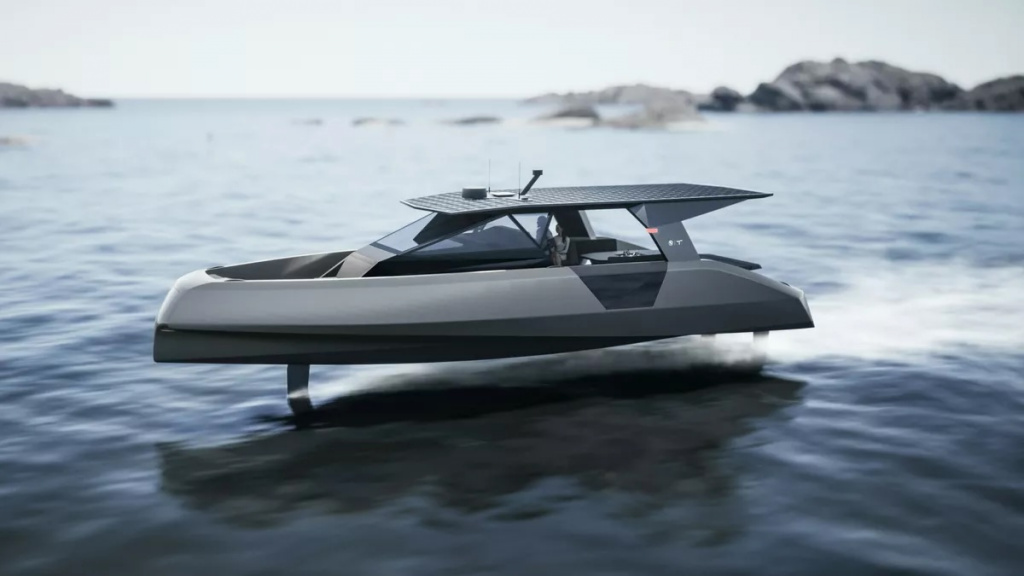
Founded in 2021, German company Tyde unveiled Icon, a 13-metre electric foiling yacht developed in collaboration with BMW, at the Cannes Yachting Festival in 2023. The company is now preparing to take orders for the larger Open, which is almost 15 metres long. It is an open boat with a cabin and a hardtop with solar panels. The Open will be fitted with a 400 kWh BMW i3 battery and two 100 kW Torqeedo Deep Blue electric motors. With these, the Open will have a cruising range of up to 50 nautical miles at a cruising speed of 25 knots.
A displacement boat moves through the water by pushing it away from itself, unlike a hydroplaning boat, which glides through the water with only part of its hull touching it. The speed of a displacement boat depends on its length and is often expressed as hull speed. This rating indicates the maximum speed that a displacement hull can efficiently achieve without significantly increasing drag and fuel consumption. For example, for a 6 metre boat this speed is approximately 6 knots and for a 7 metre boat it is just under 7 knots. Acceleration above the hull speed limit requires considerably more power and becomes inefficient when the boat starts to climb the bow wave rather than cut through the water.
How a planing hull works
Planing boats push the water downwards as they accelerate. According to Newton's third law, this action creates an upward force that lifts the hull above the surface of the water.
This mechanism allows planing hulls to travel at higher speeds than displacement boats. However, it is also very energy consuming. For example, a 25-foot motorboat uses 15 times more energy per mile than a conventional combustion engined car.
How hydrofoils work
The concept of hydrofoiling is to lift the hull out of the water and maintain it in this position in a dynamic mode, using planes that are commonly referred to as hydrofoils. As a result, it is possible to reduce the influence of waves and to reduce energy consumption when travelling at high speed. However, vessels with fully submerged wings require an ‘autopilot’ that monitors the position of the vessel and corrects the lifting force of the wings by changing the angle of attack and deflecting the flaps. A low-submerged underwater wing (Alekseev wing) is devoid of this disadvantage. Such a wing, rising to the surface, gradually loses lift, so it is not able to fully surface.
Sailing vs flying: what are the advantages of hydrofoils?
- Hydrofoils provide a vessel with lift, allowing it to rise above the water and significantly reduce drag.
- Hydrofoils can achieve higher speeds than traditional boats with the same level of engine power.
- Hydrofoiling can reduce fuel consumption by up to 80 per cent compared to conventional boats.
- A hydrofoil vessel is much more comfortable at high speeds as its hull is practically not in contact with the water surface.
- The use of electric drive allows for almost absolute silence and minimises environmental impact.
- Despite the higher initial cost, hydrofoils are cheaper to operate (primarily due to low fuel consumption).
Top 7 hydrofoil motorboats
SEAir

French company SEAir produces 5.5 metre RIB boats with folding hydrofoils based on one of the popular Zodiac ‘rib’ models, capable of speeds up to 42 knots. The proprietary SEAir Retractable 2 Foil System consists of two main curved fenders approximately at the midships of the boat and additional smaller fenders on the outboard engine leg. The folding function of the fenders allows the boat to be pulled ashore, trailered and moored without fear of damaging the expensive system.
Enata Foiler

A 32-foot boat with a top speed of 40 knots and a range of 190 miles. Equipped with industrial grade hydraulic drives powered by two 740 hp turbocharged diesels, this gives the boat a top speed of 40 knots. The boat enters foiling mode at a speed of 18 knots. The fenders are fully retractable, allowing the boat to be used in normal displacement mode with a draft not exceeding 60 cm. In the bow cockpit of the bowrider there is a duplicate joystick control.
Candela C8

A flagship electric hydrofoil boat from a Swedish start-up. Capable of travelling 57 miles at 22 knots and accelerates to 30 knots. The C-Pod's in-house designed propulsion system consists of two electric motors in a torpedo-shaped underwater hull that spin two multi-directional co-axial propellers. The combined power of the motors is 67 hp and the efficiency is very high. A special controller automatically adjusts the angles of attack of the foils. In addition to a cockpit for eight people, the boat has a cabin with a bathroom.
Iguana Foiler

A bowrider that not only walks on water and takes to the wing, but also drives on land. A one-of-a-kind amphibious boat from the company that came up with the idea of combining speedboats with a tracked chassis. Powered by a 300hp EVOY electric outboard motor, the boat will be capable of speeds of up to 30 knots. Thanks to the foils in flight mode, energy consumption promises to be half as low.
Mantaray M25

The Mantaray M25 is a 25-foot, seven-person boat with a top speed of 35 knots and a cruising speed of 25-30 knots. Unlike many of its counterparts, its self-tuning hydrofoil system is fully mechanical, which has significantly reduced the cost of the boat. In addition, Mantaray claims that the Mantaray Dynamic Wing Technology® hydrofoil system reduces fuel consumption and CO2 emissions by up to 70%.
Navier N30

The Navier N30 closed-cockpit foiler was created by a Californian start-up founded by graduates of Berkeley, MIT and Carnegie University and traces its lineage back to America's Cup judging boats. Like the participating sailboats in the regatta, it is made of carbon fibre and is capable of reaching speeds of up to 35 knots on foils. The N30 is equipped with a 90kW engine and has an impressive range of up to 90 nautical miles thanks to its powerful batteries, low weight and aerospace foiling control technology. The boat has three control modes - economy, comfort and sport - as well as an automatic mooring mode.
Tyde and BMW

Founded in 2021, German company Tyde unveiled Icon, a 13-metre electric foiling yacht developed in collaboration with BMW, at the Cannes Yachting Festival in 2023. The company is now preparing to take orders for the larger Open, which is almost 15 metres long. It is an open boat with a cabin and a hardtop with solar panels. The Open will be fitted with a 400 kWh BMW i3 battery and two 100 kW Torqeedo Deep Blue electric motors. With these, the Open will have a cruising range of up to 50 nautical miles at a cruising speed of 25 knots.
Contact a YACHTING expert for yacht or boat purchases
Recommended Reading

Катера
Яркая индивидуальность
Буксировщик Axis T235 способен укротить самый мощный двигатель Malibu — Moonson LT4.
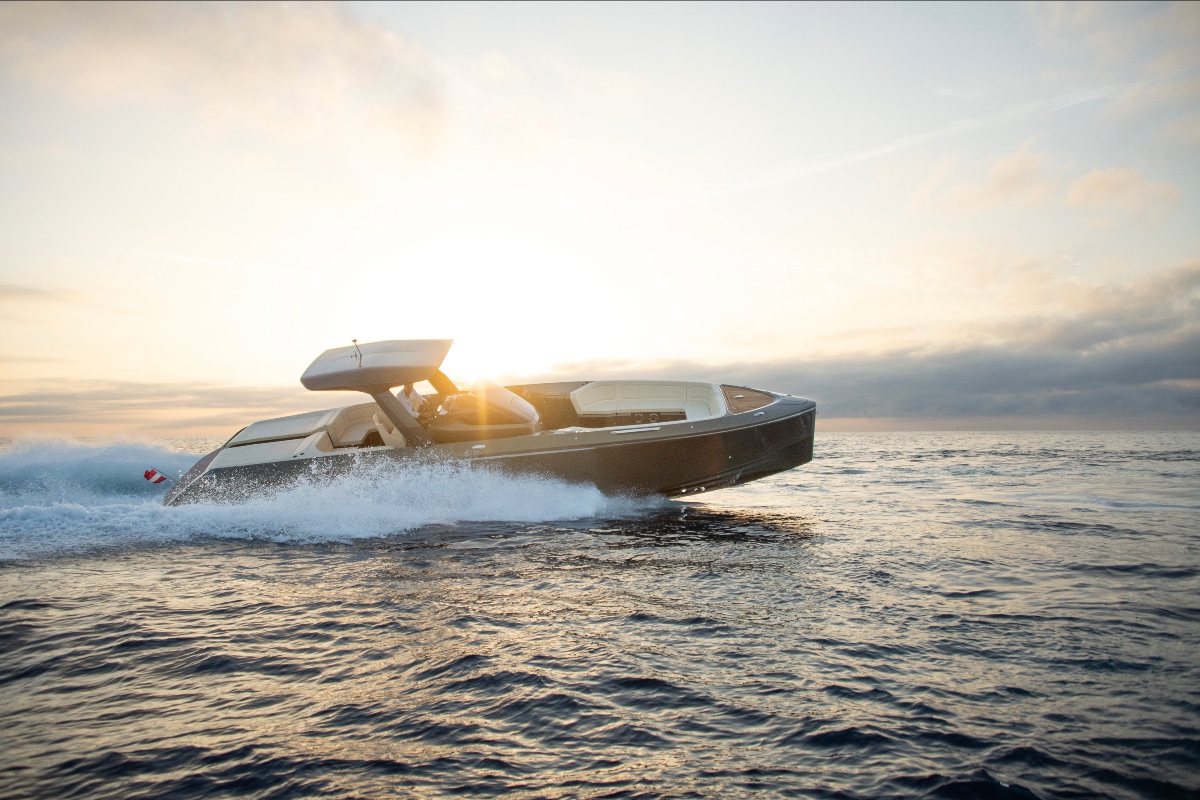
Новости
Frauscher 1212 Ghost Air: дух свободы
Frauscher представит в Каннах модификацию Air модели 1212 Ghost — боурайдер с центральной консолью управления.

Катера
Большая дружба
Первый катер 2024 года SLX 280 OB подойдет тому, кто любит путешествовать в компании. В этой модели Sea Ray расширили нос, увеличили кокпит...

